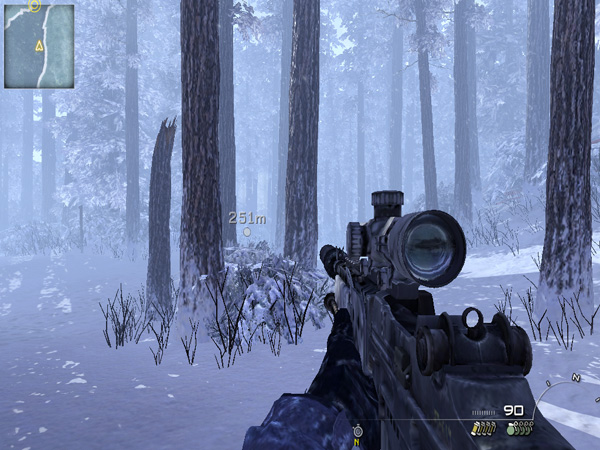The Sandy Bridge Review: Intel Core i7-2600K, i5-2500K and Core i3-2100 Tested
by Anand Lal Shimpi on January 3, 2011 12:01 AM ESTIntel’s Gen 6 Graphics
All 2nd generation Core series processors that fit into an LGA-1155 motherboard will have one of two GPUs integrated on-die: Intel’s HD Graphics 3000 or HD Graphics 2000. Intel’s upcoming Sandy Bridge E for LGA-2011 will not have an on-die GPU. All mobile 2nd generation Core series processors feature HD Graphics 3000.
The 3000 vs. 2000 comparison is pretty simple. The former has 12 cores or EUs as Intel likes to call them, while the latter only has 6. Clock speeds are the same although the higher end parts can turbo up to higher frequencies. Each EU is 128-bits wide, which makes a single EU sound a lot like a single Cayman SP.
Unlike Clarkdale, all versions of HD Graphics on Sandy Bridge support Turbo. Any TDP that is freed up by the CPU running at a lower frequency or having some of its cores shut off can be used by the GPU to turbo up. The default clock speed for both HD 2000 and 3000 on the desktop is 850MHz; however, the GPU can turbo up to 1100MHz in everything but the Core i7-2600/2600K. The top-end Sandy Bridge can run its GPU at up to 1350MHz.
| Processor | Intel HD Graphics | EUs | Quick Sync | Graphics Clock | Graphics Max Turbo |
| Intel Core i7-2600K | 3000 | 12 | Y | 850MHz | 1350MHz |
| Intel Core i7-2600 | 2000 | 6 | Y | 850MHz | 1350MHz |
| Intel Core i5-2500K | 3000 | 12 | Y | 850MHz | 1100MHz |
| Intel Core i5-2500 | 2000 | 6 | Y | 850MHz | 1100MHz |
| Intel Core i5-2400 | 2000 | 6 | Y | 850MHz | 1100MHz |
| Intel Core i5-2300 | 2000 | 6 | Y | 850MHz | 1100MHz |
| Intel Core i3-2120 | 2000 | 6 | Y | 850MHz | 1100MHz |
| Intel Core i3-2100 | 2000 | 6 | Y | 850MHz | 1100MHz |
| Intel Pentium G850 | Intel HD Graphics | 6 | N | 850MHz | 1100MHz |
| Intel Pentium G840 | Intel HD Graphics | 6 | N | 850MHz | 1100MHz |
| Intel Pentium G620 | Intel HD Graphics | 6 | N | 850MHz | 1100MHz |
Mobile is a bit different. The base GPU clock in all mobile SNB chips is 650MHz but the max turbo is higher at 1300MHz. The LV/ULV parts also have different max clocks, which we cover in the mobile article.
As I mentioned before, all mobile 2nd gen Core processors get the 12 EU version—Intel HD Graphics 3000. The desktop side is a bit more confusing. In desktop, the unlocked K-series SKUs get the 3000 GPU while everything else gets the 2000 GPU. That’s right: the SKUs most likely to be paired with discrete graphics are given the most powerful integrated graphics. Of course those users don’t pay any penalty for the beefier on-die GPU; when not in use the GPU is fully power gated.
Despite the odd perk for the K-series SKUs, Intel’s reasoning behind the GPU split does makes sense. The HD Graphics 2000 GPU is faster than any desktop integrated GPU on the market today, and it’s easy to add discrete graphics to a desktop system if the integrated GPU is insufficient. The 3000 is simply another feature to justify the small price adder for K-series buyers.
On the mobile side going entirely with 3000 is simply because of the quality of integrated or low-end graphics in mobile. You can’t easily add in a discrete card so Intel has to put its best foot forward to appease OEMs like Apple. I suspect the top-to-bottom use of HD Graphics 3000 in mobile is directly responsible for Apple using Sandy Bridge without a discrete GPU in its entry level notebooks in early 2011.
I’ve been careful to mention the use of HD Graphics 2000/3000 in 2nd generation Core series CPUs, as Intel will eventually bring Sandy Bridge down to the Pentium brand with the G800 and G600 series processors. These chips will feature a version of HD Graphics 2000 that Intel will simply call HD Graphics. Performance will be similar to the HD Graphics 2000 GPU, however it won’t feature Quick Sync.
Image Quality and Experience
Perhaps the best way to start this section is with a list. Between Jarred and I, these are the games we’ve tested with Intel’s on-die HD 3000 GPU:
Assassin’s Creed
Batman: Arkham Asylum
Borderlands
Battlefield: Bad Company 2
BioShock 2
Call of Duty: Black Ops
Call of Duty: Modern Warfare 2
Chronicles of Riddick: Dark Athena
Civilization V
Crysis: Warhead
Dawn of War II
DiRT 2
Dragon Age Origins
Elder Scrolls IV: Oblivion
Empire: Total War
Far Cry 2
Fallout 3
Fallout: New Vegas
FEAR 2: Project Origin
HAWX
HAWX 2
Left 4 Dead 2
Mafia II
Mass Effect 2
Metro 2033
STALKER: Call of Pripyat
Starcraft II
World of Warcraft
This is over two dozen titles, both old and new, that for the most part worked on Intel’s integrated graphics. Now for a GPU maker, this is nothing to be proud of, but given Intel’s track record with game compatibility this is a huge step forward.
We did of course run into some issues. Fallout 3 (but not New Vegas) requires a DLL hack to even run on Intel integrated graphics, and we saw some shadow rendering issues in Mafia II, but for the most part the titles—both old and new—worked.

Modern Warfare 2 in High Quality
Now the bad news. Despite huge performance gains and much improved compatibility, even the Intel HD Graphics 3000 requires that you run at fairly low detail settings to get playable frame rates in most of these games. There are a couple of exceptions but for the most part the rule of integrated graphics hasn’t changed: turn everything down before you start playing.

Modern Warfare 2 the way you have to run it on Intel HD Graphics 3000
This reality has been true for more than just Intel integrated graphics however. Even IGPs from AMD and NVIDIA had the same limitations, as well as the lowest end discrete cards on the market. The only advantage those solutions had over Intel in the past was performance.
Realistically we need at least another doubling of graphics performance before we can even begin to talk about playing games smoothly at higher quality settings. Interestingly enough, I’ve heard the performance of Intel’s HD Graphics 3000 is roughly equal to the GPU in the Xbox 360 at this point. It only took six years for Intel to get there. If Intel wants to contribute positively to PC gaming, we need to see continued doubling of processor graphics performance for at least the next couple generations. Unfortunately I’m worried that Ivy Bridge won’t bring another doubling as it only adds 4 EUs to the array.










283 Comments
View All Comments
RMSe17 - Monday, January 3, 2011 - link
Time for an upgrade :)marc1000 - Monday, January 3, 2011 - link
I decided to jump the first core-i lineup, and sitck to an old core2duo for some more time... now seems the wait was worth it!I just hope the prices outside US/Europe will be reasonable..
thanks Anand,
vol7ron - Monday, January 3, 2011 - link
I think there are many of us that had the same idea. Unless needing to upgrade due to malfunction or new laptop purchase, holding C2D til past the i-Series was the best move to make; whereas buying into C2D asap was the best move at the time.Still going to wait for prices to fall and more USB3 adoption. Expected new purchase: mid-2011-mid 2012
vol7ron - Monday, January 3, 2011 - link
by "i-Series" it should have said "1st gen. i-Series"CptTripps - Tuesday, January 4, 2011 - link
Ya know I usually do as you are but was an early adopter of the i7 920. Looking now it seems I made the right choice. I have had 2 years of kickassery and my processor still holds up rather well in this article.hogey74 - Thursday, January 6, 2011 - link
Me too! I've got an e8400 running at 3.9 with almost zero OC know-how and its done me well. I might snap up an i7 if they and their mobos get cheap when sandy bridge has been out a few months... but may well skip that generation all together.Einy0 - Monday, January 3, 2011 - link
Holy crapola AMD really needs Bulldozer now. Even in heavily threaded video encoding the 2600K at $300 is blowing the 1100T x6 out of the water. This is the the Core 2 Duo vs. A64 X2 all over again. Will Bulldozer be another Phenom, a day late and a dollar short? TLB bug anyone? As a PC enthusiast I really want to see competition to keep prices in check. If I had to upgrade today, I can't see how I could turn down the 2600K...medi01 - Monday, January 3, 2011 - link
Did you add mobo price into equation?I don't get all the excitement, really. If anything, Intel's anti-overclocking moves
MonkeyPaw - Monday, January 3, 2011 - link
Yeah, new Intel motherboard models are never cheap. I don't understand why the price remains so high when more an more functionality is moving to the CPU. The other killer is that you need a new board for every Intel CPU update.Lastly, it's hard to throw the "buy now" tag on it with AMD's new architecture over the horizon. Sure, AMD has a tough act to follow, but it's still an unknown that I think is worth waiting for (if it's a dog, you can still buy Intel). Keep in mind that Bulldozer will have a pretty strong IGP, one that may make decent IGP gaming a reality. It will become a matter of how powerful the x86 portion of the Bulldozer is, and they are trying a considerably different approach. Considering the amount of money you'll be paying, you might as well see how AMD shakes out. I guess it just depends on if what you have today can get you by just a little longer.
dertechie - Monday, January 3, 2011 - link
You're conflating Bulldozer and Llano there. Bulldozer is the new architecture, coming to the desktop as an 8-core throughput monster. Llano is the first desktop APU, cramming 4 32nm K10.5 cores and a Redwood class GPU onto the die. The next generation of desktop APUs will be using Bulldozer cores.